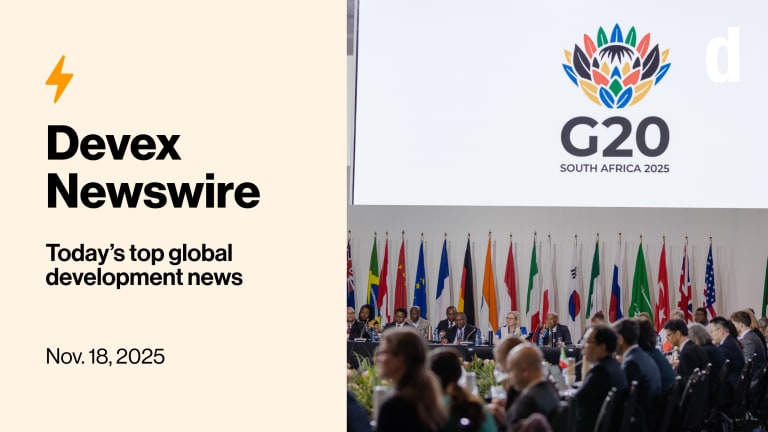
Since its democratization in 1994, South Africa has come a long way in its pursuit of a development agenda focused on international peace and security, socio-economic growth, and South-South cooperation. Prioritization of the African continent has always been the central theme of South Africa’s aid. Today, the establishment of the South African Development Partnership Agency takes the country’s foreign aid commitment a major step forward by capitalizing on its key role in the region and consolidating its foreign policy and development goals for the African continent.
South Africa is in a unique position to provide development assistance to other African countries despite being an aid recipient itself. As the largest economy in Africa, the country traditionally plays a leadership role in African multilateral institutions, such as the South African Development Community and African Union, and it is a vital backer of peacekeeping initiatives in the conflict-affected areas of the Democratic Republic of Congo, Sudan and Comoros.
At the same time, South Africa is leveraging its position in African affairs to build a respected international image and reputation. Last year, South African President Jacob Zuma made the rounds to the emerging countries of Brazil, Russia, India and China and successfully lobbied for entry into the BRICS – an informal, yet widely recognized, grouping of those countries, which is considered the most rapidly progressing bloc in the developing world.
>> The building BRICs: Analyzing the role of the BRIC countries in foreign aid and global development
South Africa’s role as a development partner is not new. In 2001, South Africa launched the African Renaissance Fund, which became the country’s main instrument for providing development aid across the region. It encapsulated the theme of the “African renaissance” – an idea first envisioned by former President Thabo Mbeki to match the spirit of reconciliation and outreach with the rest of Africa in the postapartheid period. South African aid is also directed through the New Partnership for Africa’s Development, which provides aid to several African countries for peacekeeping, technology development, research and education.
>> The hype over emerging donors
Other initiatives led by South Africa to complement the comprehensive development outline by NEPAD include the Collaborative Africa Budget Reform Initiative, an international organization that was launched in 2008 with five other African countries. It is a forum that has expanded to over 35 participating countries and gathers senior budget officials from ministries of finance, budget and treasury to pursue measures that effectively manage public finances and foster economic growth.
>> CABRI – A much needed unified voice on what aid transparency really means for aid-recipient governments
South Africa’s development assistance – like those of many emerging donors – remains fragmented among various government departments so it is difficult to track both its scale and impact. According to some studies, over 50 percent of the country’s aid goes to defense and security in the region, most notably through its major contributions to the AU and United Nations peacekeeping efforts in DRC, Burundi, Darfur in Sudan and Nepal. South African aid also focuses on education.
In 2006, ARF provided $33.7 million to fund the presidential elections in DRC. Between 2009 and 2010, South Africa provided $500,000 to support the AU observer mission to the 2010 Sudan elections, and provided $36.3 million to Zimbabwe’s agricultural and economic recovery programs. Recently, there has been a shift in ARF funding to focus more on infrastructure.
According to the Organization for Economic Cooperation and Development, South African development assistance from 2008 to 2009 amounted to $109 million. South Africa’s Department of Defense and Department of Education accounted for the bulk of these expenditures. Approximately 70 percent of South African aid is targeted for SADC member states.

South Africa also hopes to play an important role in trilateral dialogue, where South Africa acts as a mediator between donor countries and African aid recipients, especially in AU-EU relations. To extend its cooperation in South-South relations, South Africa joined the India-Brazil-South Africa Dialogue Forum to engage in cooperation and closer coordination on global issues and development.
There has been buzz surrounding the establishment of the South African Development Partnership Agency, a traditional-donor style aid agency. The primary objective of the new aid organization is the formalization of a South African international development arm much like the United States Agency for International Development, or the United Kingdom’s Department for International Development. It highlights a growing trend among emerging countries with strong regional presences – such as India, Brazil and South Korea – to put a stamp on their development assistance.
>> South Africa plans opening aid agency
SADPA will have a projected budget of $98.7 million for fiscal 2011-2012. Over the course of the next year, much of that money will be allocated to the design, construction and renovation of its offices and facilities. For fiscal 2012-2013 and fiscal 2013-2014, the allocated operational budgets will be $19.9 million and $70.5 million, respectively. Furthermore, some of South Africa’s development partners have promised to match South African aid on a rand for rand basis. If these promises are met, SADPA could have funding of $375 million at its disposal.
If launched in April 2012 as planned, South Africa will be ahead of China and India in establishing its own aid agency. It will fall under the Department of International Relations and Cooperation in order to align its foreign aid with a coherent foreign policy plan, and it will take over the management of ARF and coordination with NEPAD. The agency will focus on bringing coherence rather than initiating a new process in development cooperation.
From Maputo to Khartoum, leaders are looking to Pretoria to play a key role in the continent’s development. While SADPA’s budget may not be as significant as other international donors across the African continent, analysts agree that the agency has a unique geostrategic advantage and its more intimate insider understanding of Africa’s political and cultural landscape and development challenges could help channel the right kind of aid and technical assistance for maximum impact. That notwithstanding, SADPA, like other nascent development organizations, will likely require the support of tested international private sector partners who can transfer technical know-how and establish best practices across the organization. For major global development consultancies and nongovernmental organizations, now is the right time to begin building relationships with both SADPA and local implementing partners that are already accustomed to working with the South African government.
Nikita Agrawal contributed to this report.
Read more:
Growing microfinance: Going beyond conventional banking








